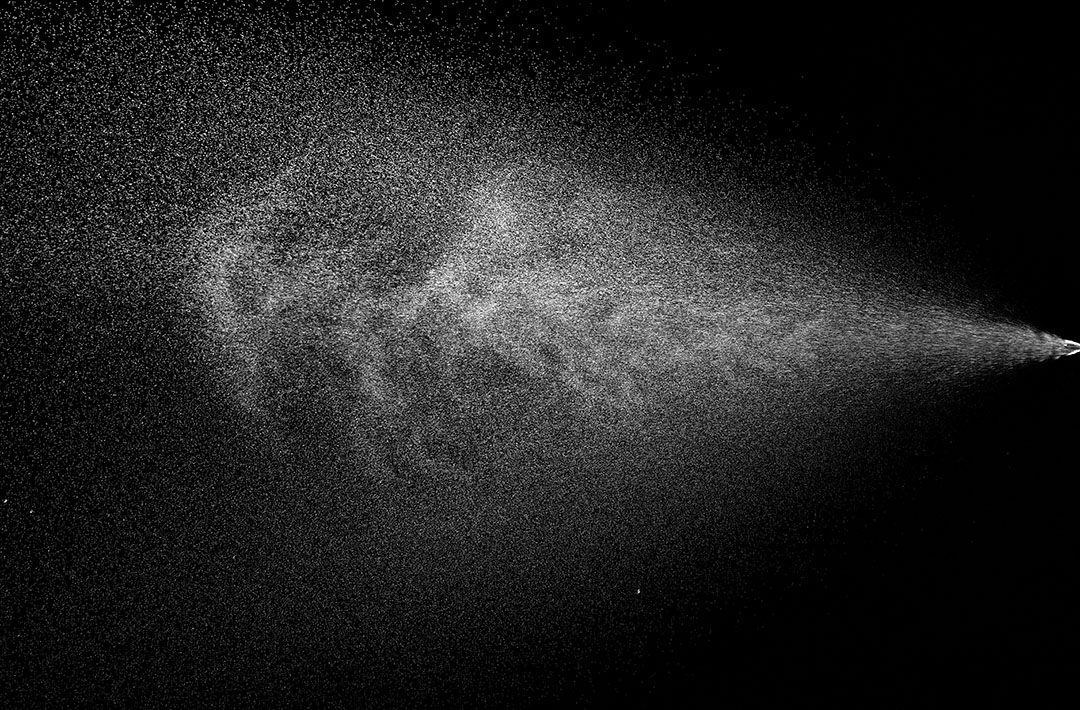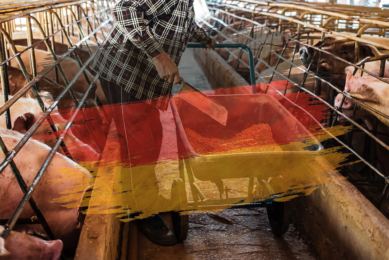The benefits of in-line moisture management

Producing feed with consistent nutrient value, moisture content, and overall quality can be challenging. A self-regulating, in-line system to monitor and adjust moisture levels can help to step up feed quality and milling efficiency.
Moisture losses and mould growth in feed can be a challenge for feed millers. External factors, such as high temperatures combined with high humidity, and fluctuations in day and night temperatures pose ideal conditions for microbes to grow and degrade the quality of nutrients in compound feed. Additionally, the feed production process reduces moisture content, leading to process losses, such as decreased pellet durability and reduced throughput (also referred to as shrinkage or loss of bulk).
Optimising moisture helps support feed safety
Simply adding water to feed during processing might seem like a plausible solution to increase the moisture content of feed. However, this increases water activity (aW), resulting in higher availability of moisture for spoilage organisms to grow. In order to combat this negative consequence, it is necessary to optimise the moisture level in the feed through a hydrated solution of water and feed additives. This approach helps prevent moulds from contaminating feed. Including specific buffered organic acids within the hydrated solution ensures protection against spoilage organisms, even after the feed production process, supporting increased shelf life of feed.
Why self-regulating dosing?
To influence moisture levels in feed, a dosing system is generally utilised within the feed production line. In most cases, the system doses a set amount of moisture to correct for standard moisture losses. However, lacking real-time data, the moisture level tends to be corrected for average or theoretical losses, with the risk of adding too much or too little moisture. This can result in variations in feed quality, pellet durability and energy consumption. In-line moisture management is a self-regulating solution that helps address issues causing variability and feed safety concerns during feed processing. A microwave sensor is generally installed either inside the mixer or downstream of the mixer. When in use, the sensor sends a signal, which is interpreted by software, and the dosage of the hydrated solution is adjusted immediately. This system poses several advantages: real-time optimisation of moisture in the production process, reduction of quality variability and lower susceptibility of mould contamination. Furthermore, it improves feed mill efficiency by reducing friction in the pelletiser, resulting in an average of up to 10% reduction in energy consumption at this production step.

Microwave versus NIR
Near Infra-Red (NIR) and microwaves are the most commonly used tools for moisture analysis. These technologies analyse moisture content in different ways. NIR utilises multiple wavelengths to measure multiple organic concentrations, such as moisture, fat/oil, protein, sugars, and others. Therefore, NIR is a valuable tool for feed millers to utilise for quality control. When it comes to moisture detection however, it tends to be less capable than microwave sensors. Whereas NIR focusses on light reflection, and thus only measures the surface moisture on a feed particle, microwaves penetrate feed particles. Since feed particles also contain moisture within, microwave sensors yield a more accurate total moisture measurement.
Also read: NIRS to better measure nutrients in pasture
Implementing self-regulating dosing
Although industry data is not available, the general assumption is that less than 10% of feed millers globally currently utilise self-regulating dosing. There is a great opportunity for feed millers to take a significant step in staying ahead of competitors and increasing regulatory demands. Trouw Nutrition designed the Moisture Management System (MMS) to battle various challenges described above. Within the boundaries set by the feed mill, the MMS regulates itself to reach set moisture targets. Using microwave sensors, data about moisture levels are analysed and the system immediately adjusts the amount of hydrated solution when moisture falls outside of optimal thresholds. This self-regulation mechanism requires minimal efforts from feed mill personnel. Real-time data analysis allows for accurate and flexible dosage. Finally, this precision approach to managing moisture during feed processing helps support feed mills’ sustainability efforts by reducing energy consumption. What are the findings from feed mills employing the technology? In addition to the improvements in energy consumption described above, users are witnessing other positive results with automatic dosing. On average there is an overall improvement of 0.5 – 1 % in terms of overcoming moisture content losses in raw material that occur during the feed production process. Improved consistency, reduced energy consumption and a higher level of accuracy are some of the precision improvements that allow in-line moisture management to support enhanced efficiency during and beyond the feed production process.











